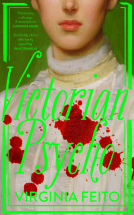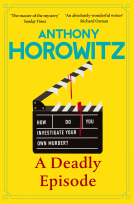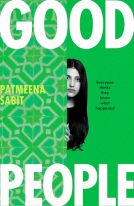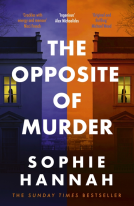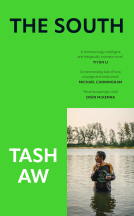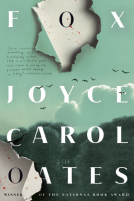
Strolling Through Rome
by Mario Erasmo
This title was previously available on NetGalley and is now archived.
Send NetGalley books directly to your Kindle or Kindle app
1
To read on a Kindle or Kindle app, please add kindle@netgalley.com as an approved email address to receive files in your Amazon account. Click here for step-by-step instructions.
2
Also find your Kindle email address within your Amazon account, and enter it here.
Pub Date 1 Jul 2015 | Archive Date 9 Jul 2015
I.B.Tauris | I. B. Tauris
Description
Rome, the Eternal City - birthplace of western civilisation and soul of the ancient world - has a history that stretches back two thousand five hundred years. It is also one of the most-visited places in the world. But where does one begin to delve into two millennia of history, culture, art and architecture, whilst also navigating the vibrant modern city?
Mario Erasmo here guides the traveller through Rome’s many layers of history, exploring the streets, museums, piazze, ruins and parks of this ‘city of the soul’. Punctuated with anecdote, myth and legend, these unique walks often retrace the very steps taken by ancient Romans, early Christians, medieval pilgrims, Renaissance artists and aristocrats on the Grand Tour. Including 15 Walking Tours with maps and guides to the well-known and the less familiar sites, here is a rich cultural history of Rome that brings its epic past alive, illuminating the extraordinary sights and fascinating secrets of one of Europe’s most beguiling cities.
Available Editions
| EDITION | Paperback |
| ISBN | 9781780763514 |
| PRICE | US$20.00 (USD) |
Average rating from 21 members
Featured Reviews
The creme de la creme of Roman guidebooks
When I next visit Rome, this is the essential book I'll be taking with me. I know Erasmo's scholarly book on Roman death but here he's writing for a popular tourist/visitor audience and manages the crossover admirably. All his depth of knowledge is here but underpinned by his passion for the city, and a lovely witty yet erudite approach.
This offers a range of mouth-watering walking tours through the city focused by area or by time period: I can't wait to do the Renaissance Rome tour for example, and found Erasmo's commentary full of wonderful facts that really bring the city to life.
There are maps and a brief selection of photos but this is primarily a textual guide: given Erasmo's position as a Classics professor this is certainly much more detailed than your average guide-book and may well prove just as enticing to armchair travellers.
 Rosemary S, Librarian
Rosemary S, Librarian
Rome, the Eternal City – so much to see, so much to do. Where to start? Erasmo offers 15 walking tours that take visitors though cathedrals, ruins, parks, shops, and gelato stands. Some of the sights are well known, but others are off the beaten path, insuring that visitors see a few hidden gems. From ancient Rome to the Renaissance, there are amazing things to see all over he city and Erasmo makes sure that visitors have the opportunity to see them all.
 Simon T, Reviewer
Simon T, Reviewer
This was a book I jumped at the chance to read and review. I have visited Rome many times and, though my tours largely focused on the ancient sights of the city, I have long-since devised a number of walks of my own that cover the best sights to visit. I might, therefore, be the most critical type of reviewer possible for this book. I’ll give an overview at the end, but concentrate on the various tours contained within first.
Tour 1 is, sadly, largely pointless. It is a general ‘best bits’ tour that by its very nature leaps around and fails to make the best of anything, the text of the tour almost constantly referring to other tours, the phrase (see tour x) appearing repeatedly. I feel that if this tour had been put at the end to finish off the book rather than as an introduction, it would have worked much better. Simply, if you intend to use this book to tour Rome, I would ignore tour 1 entirely and start at 2.
Tour 2 concentrates on St Peters and the Vatican. No0t much strolling through Rome in 2. More fighting through crowds in a relatively small area. The text goes into great detail of what is to be seen in the Vatican museum and reads a lot more like a very specific and detailed museum guide book than a walking tour of Rome. That being said, it is interesting and made me want to revisit the museum and use the book, so it has value.
Tour 3 deals with the Borgo area between the Vatican and the river, including the Castel Sant Angelo and the Tiber and Janiculum hill. This was the first time that I felt I was ‘strolling through Rome’ and I enjoyed that feeling. The information imparted is fascinating in places and delivered well. There is a tendency again once the tour takes us into the Castel to turn into the detailed museum guide again, though as I noted earlier, that has a use too.
Tour 4 takes us to Trastevere and the Ghetto area on either side of the Tiber. This was, for me, when the book really hit its stride. The tour is a sensible route, taking in the best the area has to offer, allows for a real soaking up of the feel of Rome, and the facts and anecdotes given within are fascinating and useful. Next time I go, I shall make use of tour 4. There is a growing feeling at this point of ‘baroque-oholism’, which is a common theme in Rome guides, but a number of the details here had me scrambling for Google Earth to check them out, which is an excellent sign.
Tour 5 takes us to the Capitol and the Capitoline museums. The outside stroll here is atmospheric and interesting, which is impressive, given that the area in my experience is mostly busy, fraught, covered with buses and tourists taking selfies, and smells mostly of carbon monoxide. When the tour climbs the hill and focuses on the museums (some of the best in the world, by the way) it falls back into the by-now-familiar detailed museum guide. However, in contrast to the earlier parts like this, the fun and fascinating incidental background notes and anecdotes prevent this from simply becoming a list and make the museum tour excellent.
Tour 6 is my most familiar area, the forum and Palatine. The attention to detail here is impressive, given that the author focuses throughout the book on every era of the city, yet his knowledge of the ancient ruins is pretty impressive. I noted no glaring inaccuracies, and even found myself nodding approvingly as he relates a little-known detail that is more commonly ignored or even plain wrong. The tour is nice and again feels like it lives up to the book’s title. In fact it coincides quite nicely with my own version of that walk, which I found pleasing. One odd hiccup I noted (real nerd stuff here, so feel free to ignore) was the author’s assertion that the emperor Maxentius’ son Romulus died in 309 at the age of 4. Given that the year of his birth is uncertain and highly contested, his age at death is dubious and almost certainly wasn’t 4. More irksome, though, is that on tour 14, he claims that Romulus died in 307 (309 is right, by the way.)
Tour 7 takes us through the busy Piazza Venezia and out to Campo de Fiori. Again this tour is nicely back into the ‘strolling through Rome’ rhythm. It tends to concentrate heavily on the renaissance and baroque palaces and churches, and will thrill those who love that era. Even for me as a classical historian, I found odd ancient bits and pieces well related and interesting.
Tour 8 covers Campo Marzio, including some of the most famous sights of Rome, such as the Pantheon and the Trevi Fountain. It is something of a mixed bag for sights, covering baroque churches and palaces, as well as Museum tours and ancient ruins. And again it hits the mark for strolling. I learned things I didn’t know here, particularly in relation to the Trevi Fountain. So spot on!
Tour 9 takes us north from there to the Piazza del Popolo. This feels a lot like a follow-on from tour 8 (which is reasonable, since they are largely two parts of the same area of Rome. The feel is similar, and so is the mix of eras and types of sight. It does, for the first time, start to include more concentration on later times, such as the 19th-20th century. Again, it is a stroll.
Tour 10 takes us from that area over the hills in Rome’s northern area. It is an interesting mix, with the whole familiar ‘Baroque Church’ thing slowly giving way to urban parks and gardens with Renaissance mansions. This is probably the quietest and most peaceful area within the walls where a visitor can stroll, and definitely makes a good tour.
Tour 11 concentrates on the Quirinale hill. This is, in my opinion, something of a less-visited and oft-overlooked area of Rome, and so it was nice to see this tour. The area is rather complex and tough to navigate for the uninitiated, so at this point the guide becomes more or less essential. Wandering around here can get you hopelessly lost. It was well handled, even the side-visits it recommends being sensible and well-placed, and again I even learned something important to me. I had not been aware of the remains of the Serapeum on the hill, but that is now noted for my next visit.
Tour 12 heads through the area of Termini station and the Esquiline hill. Again this is familiar stomping ground for me. In fact my own favourite walk starts here and heads out towards the walls at Porta Maggiore. Instead, though, this tour takes in the great basilica of Santa Maria Maggiore (another Museum-guide in detail) and then heads down into the heart of the ancient city once more. I felt that some of the more obscure but fascinating sights were bypassed or glossed over on the way past in favour of the bigger ones, but again that is a common thing with guides.
Tour 13 covers the Lateran and Caelian hills. I found this tour very odd indeed. It covers many of my favourite parts of Rome, but seems to do so in a haphazard, random route, zipping about and doubling back, when it could easily have been done in a more sensible circuit. Indeed, a different circuit would have included some excellent locations that are completely missed here, like Nero’s nymphaeum, or the great Severan fountain head in Piazza Vittorio Emanuelle II. All in all it felt a little rushed and incomplete. Essentially, the southern third of the city seems to be covered in one tour, compared with the best part of ten tours covering the north. The south feels neglected.
Tour 14 begins the same way, with a nice little circuit around Porta San Paolo area, then nipping out to take a bus to the Via Appia. In my opinion tour 13 and the opening section of 14 could easily have been detailed out into half a dozen more sensible and in-depth tours which would then have matched those in the first half of the book. However, on a bright note, once the tour heads into the Via Appia, we are once more strolling with detailed and fascinating notes from our guide. I was even impressed at the level of detail on even the lesser monuments here.
Tour 15 was an interesting tour. It is well-described and interesting. However, I think it has no real place in this guide as it details the ancient city of Ostia Antica away on the coast, a train ride from the city. Moreover, Ostia is such an amazing place (akin to Pompeii and Herculaneum) that is deserves (and has) its own guides in far more depth than this walking tour. I feel the space and time in the guide would have been better used doing justice to the southern regions of the city.
And there we go. 15 tours in detail.
Overall, I enjoyed the guide and found it a good read and an informative one, which is quite hard to do with me and Rome. I am very picky and choosy here. If you are familiar with the city, you could read it at home, like I did, and picture almost every street. If you are not familiar with the city, and are not actually going there, don’t buy it as you’ll get very little out of it that way. If, however, you are heading to Rome, especially if it is your first time, and you want to squeeze every drop of history and culture into your visit, buy the guide and follow it well. It will take you to amazing places and show you wondrous things. I was disappointed at the things the guide missed (most of which are in the east and the south.) The author has pretty much mapped the north, west and centre to the point where there is nothing you won’t see, but in the south and the east you completely ignore some amazing places. With respect to the list of opening hours and prices, my advice is do not take that as gospel. Such things change with every tide, and even if they officially match the notes in the book, the chances are that for no readily apparent reason they will be different on the day. There is no hard and fast rule about when things are open in Rome. It seems often to be decided daily on a whim.
The upshot? A good buy if you want to go to Rome and be guided around. A few things are missed, but for the general visitor there is an absolute wealth of stuff here that will keep your week’s holiday busy and teach you things along the way. I hope to see a future second edition that pays more attention to the south.
 zeb k, Reviewer
zeb k, Reviewer
In his own words (and the sub-title) of the book, this is the definitive walking guide to the Eternal City, and his word is good enough for me. All kidding aside, Professore Erasmo (who previously wrote a guide to Florence/Firenza), has a PhD from Yale and teaches Classics at the University of Georgia. If you look on the UGA website, you will see that his students rave about him as a teacher.
Whatever he brings to his classes, he brings a light and chatty style to this book. It’s like going to see the city with a friend who knows all about the history and culture of Rome, and also the ‘special’ places that the locals go.
Depending where in the Eternal City you want to go, he has a walking tour that you can do in a day (Tour One) or if you do the whole book, looks to take weeks. The good thing is that you can do the tours sequentially or just go to the places you have time to see. Each tour starts with its’ own map. Whichever you choose you won’t go wrong.
At the end of the book is a very useful listing of Italian holidays when you can expect everything to be closed; and there is a listing of the hours of most of the monuments and museums. Lastly there is a Glossary of the meanings of names of what the different types of monuments are called (i.e. cippus = burial marker). Worthwhile for any traveler to Rome, and a good companion to your Rough Guide.
Zeb Kantrowitz zworstblog.blogspot.com zebsblog@gmail.com
 Lisa S, Reviewer
Lisa S, Reviewer
This is a great companion for any trip to Rome with its well-researched history, varied walks and excellent directions. Artists, princes, queens and other interesting characters populate these pages, and who could fail to want to read about them while touring Rome's gorgeous piazzas, churches and fountains? There is a lot of information to absorb here, so it is probably best not to do too many walks in too short a time!
I will definitely be using this guide on my next trip to this radiant city.




